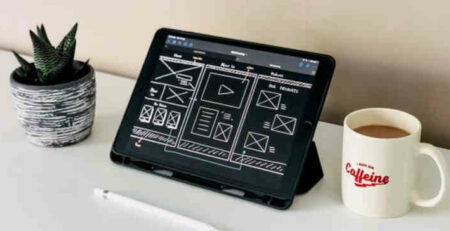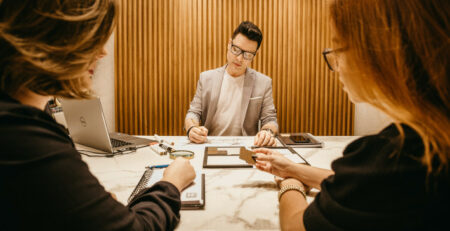Struggling to Stay Productive While Working Remotely? Here Are 15 Things That Can Help
A common misconception held by managers and other business leaders is that productivity tends to slump for employees working remotely. With remote work continuing to grow in popularity, any misgivings about letting employees work from home could be harmful to the entire company.
The good news is that productivity doesn’t plummet when workers go remote, but creatives may be hard-pressed to keep their imaginations running when they move out of the traditional office.
Whether you’ve been remote a while or just made the switch recently, you’ve likely faced writer’s block at some point. Follow the designer tips in this guide to stay on the cutting edge and produce your best design work from a remote position.
Creatives and Remote Work
Like many industries, creative work has seen a huge rise in remote work positions recently. Advances in technology like video conferencing and digital production software have kept up a steady pace since the early 2000s and allowed for more and more remote work.
For creatives, adjusting to remote work can be difficult. Most creative jobs are done through iteration and collaboration, so if you’re far away from the rest of your team and the people with a stake in your project, you have to find a new way to maintain communication and file sharing.
The main difference for many creatives who move to remote work is that they don’t have the incidental interactions with coworkers that so often take their ideas in new directions. Brainstorming and talking through current problems with team members is a huge part of creating the best solution to design problems.
With a little ingenuity, creative teams can establish best practices for staying productive when all or part of the team works remotely. New web-based software is designed to share information and communicate. Setting up regular meetings and channels for brainstorming and critiquing is the best way for creatives to get the most out of these new tools.
Remote Work Projections for 2021
It’s not only creatives who have seen a considerable increase in remote work positions. According to one study from the Harvard Business School, half of all participating firms had more than one-fifth of their employees working remotely. By one estimate, as much as 16% of jobs that were made remote in the last year will continue to be remote more or less permanently.
While some managers and business leaders have understandable apprehensions about remote work, they’re also warming up to the idea as they see it being used effectively by competitors or on a small scale within their own companies. All this points to one likelihood: remote work is here to stay and more of us will be working outside of traditional office spaces, probably in the very near future.
That’s why it’s so important to get a handle on remote work as soon as possible. Even if your job isn’t remote, the odds that you’ll be working on a team with remote members are quite high.

Does Remote Work Make You Less Productive?
The short answer is no, simply working remotely doesn’t automatically make workers less productive. For many managers, the idea of having workers physically absent would seem to make it harder to monitor them and keep them on task. However, evidence shows that there is no significant drop in productivity when workers are remote.
Creative positions appear to reach higher levels of productivity when workers go remote. Perhaps because the tools of the trade are already web-based and maybe also due to the reduced hovering of stakeholders hungry for deliverables, creative workers seem to get more done when they work remotely.
While the ability to concentrate on work is easier when you’re working remotely, staying motivated and inspired so that you can produce your best creative work is more difficult.
8 Designer Tips to Stay Creative When Working Remotely
Inspiration is an abstract thing. It can come from the most insignificant thing or it can just hit you apparently out of nowhere. When you leave the office, you’re likely to lose some of the sources of inspiration that you’re used to relying on to stay sharp and outshine the competition.
Follow these designer tips to keep your mind flexible and active when you’re working a remote creative job:
1- Study, Study, Study
New books on design thinking are coming out all the time. Since business goals are constantly changing, the design solutions that respond to them also have to change. If you want to stay on top of the newest design thinking, you have to stay informed.
For other creative positions that aren’t strictly limited to design, there are still many places to look for the latest work. Monitoring ad trends can help. So can trade blogs, publications, and targeted online forums and conferences.
2- Network
Such forums and conferences are a great way to make contact with people in similar creative roles at other organizations. Trade knowledge is incredibly important for staying on top of the latest ideas and even getting feedback on your latest work.
When you work remotely, you miss out on the community feeling that traditional offices have. Networking online through platforms like LinkedIn can help you find people who like getting into the nitty-gritty of creative work.
3- Log Off
If you’re working remotely, you might be working, talking to family, and getting your entertainment on the same device. Not only is that possibly bad for your eyesight, but it’s also a surefire way to burn out. Make sure you get away from the computer once in a while and take in some non-digital information.
Music is a great way to switch gears after a long day of remote working. Podcasts are also a nice informative way to learn that doesn’t involve having to look at anything. The best thing you can do is go outside for a walk so you can let your brain rest and get some fresh air.
4- Collaborate
Remote workers usually have some kind of chat platform that’s shared by the creative team or the entire company. One great strategy for team collaboration is to divide these chats into channels that are dedicated to specific topics.
Establishing a chat for critique and sharing favorite creative work will give everyone something fun to talk about and create a deposit of new ideas for people to use as inspiration.
5- Change Locations
Leaving your workspace for a cafe or another location can help you see things from a new perspective. Some remote workers take this designer tip to the extreme and move to entirely new countries, but a simple move to a coworking space or a coffee shop can be enough to give your brain a boost.
Going outside to work is also a great way to get some authentic background noise. Ambient noise helps us think more creatively, especially when it’s unrelated to us and won’t drag us away from our work.
6- Understand Your Process
The biggest disadvantage of working in a traditional office structure is that, to varying degrees, your schedule is decided by someone else who may or may not fully understand the way you get your work done. When you work remotely, you can structure things according to your style.
Give yourself time to process things, come up with new ideas, and test them out so that you can make sure you’re producing creative work that makes you proud. Nothing destroys the will to create faster than repeatedly producing work that you’re not completely satisfied with.
7- Get Our of Your Comfort Zone
Physically changing places can help you stay creative and so can building your skillset in new directions where you’re currently lacking. If you identify your weaknesses and take the time to improve them, you’ll be a more well-rounded worker and have more applicable strategies in your toolkit.
Online webinars and unpaid work that serves primarily as a personal experiment are two of the best ways to make yourself uncomfortable and thus build new skills. You don’t have to show it to anyone, but if you’re happy with the results you can always use it as part of your portfolio.
8- Stay Active
You should make sure to get some sort of physical exercise as well as giving your brain a workout with new information and design thinking. You don’t have to have hours and hours of spare time to get enough exercise. Federal recommendations for adults are only half an hour of brisk exercise five days per week.
Walking on your lunch break, for example, will help your mind relax and also help curb the possible negative health effects of sitting down at a desk all day. The key to a working and curious mind is a variation of stimuli and exercise is great for that. Even if you don’t go outside, you can invest in a standing desk and an under-desk treadmill to get your heart rate up for a short time each day.
Professionalism and Remote Work
A central concern of managers is that people will get too relaxed when they start working remotely. Designer remote work often makes you want to spend the whole day in your sweatpants since you’re not in the office anymore. Avoiding this habit will not only make things feel more business-oriented, but it will also help you divide your working life from your free time once the day has finished.
That being said, there’s probably no reason for you to dress up in a suit and tie every day. You should make sure you’re not appearing on the video conference screen in a half-open bathrobe, but a nice button-up shirt is probably enough.
Some people who haven’t used video conferencing tools fall victim to faux-pas related to leaving their camera or microphone on while they go about their business. Be mindful of how your platform works and make sure you keep things muted unless you’re currently on the microphone speaking to everyone.
Professionalism isn’t just for management. Creatives can also benefit from keeping things at least a little professional because it saves time and makes assignments feel more important.
7 Designer Tips for Productive Remote Work
Maintaining your creative energy is a significant part of staying productive, but there are a few other things you should do to keep producing quality creative work. Use these designer tips to stay organized and meet your deadlines with meaningful products.
1- Define Your Hours
Separating your workday from the rest of your life is essential for a good work-life balance. If you don’t want to get stuck answering emails at midnight, make sure everyone knows when you’re available and on the clock. This becomes even more important when you’re in a different time zone from all or part of your team.
2- Have a Dedicated Workspace
Designer remote work and work-from-home positions might make you want to work from bed, especially on cold winter days. But if you’re working on a laptop on the couch or in the bed, you won’t be able to fully unplug when you finish work. On the other hand, if you have a workplace set up, you can happily turn off the computer and move elsewhere in your house or apartment and truly feel that you’re not working.
3- Make a Personalized Schedule
We all have different body clocks. Some people do their best work early in the morning before they have fatigue and others take longer to wake up and are more effective in the afternoon. Once you understand which type you are, you can schedule things like meetings and research during the hours when you work best and do things like answer emails when you’re most likely to be tired.
4- Set Reasonable Deadlines
Not everyone is lucky enough to have control over their deadlines, but to whatever extent possible you should give yourself enough time to brainstorm, test things out, make new iterations, and have some time to let your unconscious mind work. If you don’t set your deadlines, work with your managers to make sure you don’t have a breakneck schedule that will burn you out or prevent you from producing your best work.
5- Communicate More
It might be coworkers or other professionals with similar jobs to yours, but you should talk to people who will lend a kind ear so the remote work doesn’t feel so isolating. For designer remote work, reaching out to others is a good way to get around writer’s block and brainstorm with other people. Talking more by phone, video, or chat will also help management get over any remaining doubts they had about letting you go remote in the first place.
6- Don’t Focus On Deliverables
Management might be hyper-concerned with deliverables like prototypes and completed designs, but creatives should already understand that most of the work of designing happens in between iterations. Don’t fixate on finishing all the aspects of a deliverable or you may end up wasting valuable time. Research and original ideas are every bit as important as the personas and wireframes you might produce in designer remote work, for example.
7- Establish Success Benchmarks
Non-creative stakeholders might be relying on those deliverables to measure how productive you’re being, but how do you know if you’re working effectively? Make sure you have both short-term and long-term goals established so you know if you’re on track to finish by your deadline or if you need to speed things up a little bit.
More qualitative goals like implementing specific design techniques or making a product that stands out should also be a part of the way you measure your output. Much of the self-doubt we feel about creative products can be dealt with by forming a picture of what success will look like as best you can before you start work on a project.

Conclusion:
Moving to remote work is a big change for creatives. Maintaining the same levels of inspiration, creativity, and productivity can be hard when the traditional office and in-person coworkers are no longer around. However, modern technology and design thinking have both made designer remote work and other creative distance working much easier.
The remote work trend is picking up steam and it doesn’t show any signs of slowing anytime soon. Whether your creative job is going to be made remote or you’re just working on a partially or fully remote team, knowing how to accommodate remote work is fast becoming an essential skill. Use one of the 15 designer tips in this guide to help make creative remote work as effective and productive as possible.












